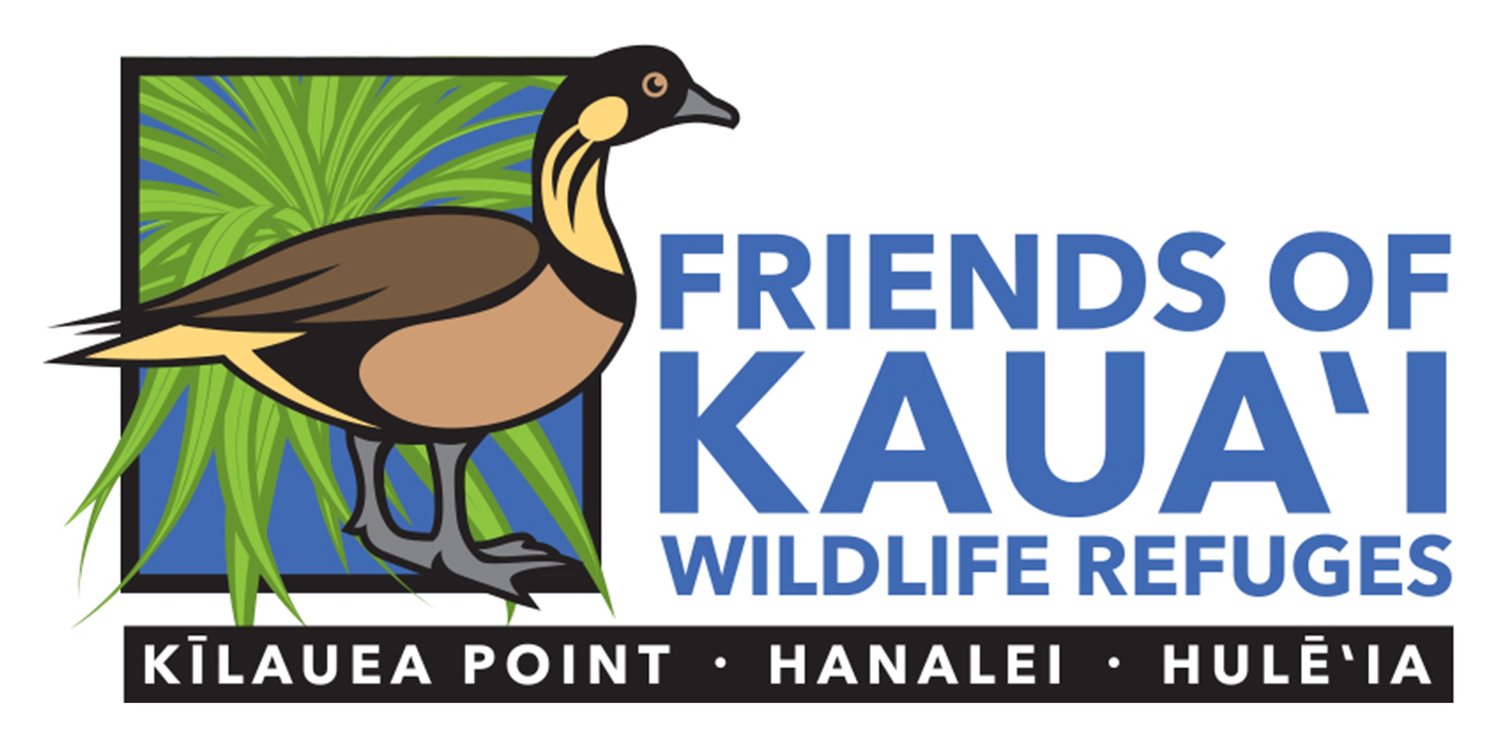
About the Mōlī
Are you wondering about those big birds near the “Mōlī: Laysan albatross” signs in the two circles in Princeville?
Mōlī (Laysan albatross) have a history of nesting on Kauaʻi for millions of years. After humans arrived about one thousand years ago, the birds became vulnerable to predation. Since they had no natural predators, they had no defense against them. They only resumed nesting on Kauaʻi in the 1970s, and the first chick to fledge (fly for the first time) from Kauaʻi was in 1979, perhaps the first in one thousand years..
Keoniana Circle Chick
Name: “Neptune”
Gender: Male
Band #: J356
Hatched: February 11, 2025
Mom: “Joyce” (K073) was banded in 2007 at Kīlauea Point National Wildlife Refuge. She was named after a resident in the neighborhood whose husband’s middle name was Lee.
Dad: “Lee” (K247) was banded in Princeville in 2007. He was named after a resident of the neighborhood whose wife’s name was Joyce.
Previous nesting: has always been on Keoniana Circle. Their first chick hatched in 2017. Lee and Joyce have successfully fledged five out of six previous chicks. One died from avian pox, a disease carried by mosquitoes. Neptune is their seventh chick.
Anticipated fledge (first flight): mid-July to early August, depending on how strong, eager and well-fed Neptune is.
Kaweonui Circle Chick
Name: “Mea Ola” (Hawaiian word meaning “survivor”).
Gender: Male
Band #: J354
Hatched: January 31, 2025.
Mom: “Dora” (KP889) was banded in Princeville in 2005. Dora is named after a niece of a local resident.
Dad: “Larry” (K229) was banded in Princeville in 2007. Larry was named after a Sears repairman whom one resident said was his most frequent visitor.
Previous nesting: has always been on Kaweonui Circle. Their first chick hatched in 2016. Only two of their five previous chicks have survived. Of the three that were lost, one was killed by a feral cat, one died from obstruction due to plastics inadvertently fed by the parents, and one was hit by a car. Mea Ola is their sixth chick.
Anticipated fledge (first flight): early to mid-July, depending on how strong, eager and well-fed.
This is the chick shown in the photo above.
More about Mōlī
Mōlī (Laysan Albatross) are a special attraction on the North Shore of Kauaʻi. Other than on Kuaihelani (Midway Atoll), this is the only place in the world where mōlī nest among humans.
Here are some interesting facts about Mōlī:
Mōlī come to Kauaʻi from the Pacific Ocean off Alaska. They arrive on Kauaʻi in early November, and the last chick fledges in late July.
Mōlī only come to terra firma to mate and breed. Otherwise, the birds are either on the surface of the ocean to eat, or on the wing.
Mōlī can lock their wings in place and turn off parts of their brains for bursts of time, allowing them to sleep while flying.
A mōlī is the oldest known wild bird. “Wisdom” was fitted with a tracking band in 1956 when she was at least 6 years old. She is a member of the Kuaihelani colony. Wisdom’s most recent chick hatched in 2025.
Mōlī feel at home in North Shore communities because we give them space, leash our dogs, keep our cats inside, and drive slower during nesting season. Please be aware and extra careful as the birds are liable to rest and land anywhere, including the road. It is all our kuleana (responsibility) to help keep them safe.
Mahalo for your kōkua (assistance/support)! Here’s how you can help:
Keep a distance of 15 away from mōlī.
Refrain from feeding feral and free-roaming cats.
Keep dogs on a leash.
To learn more:
Visit the Kauaʻi Albatross Network.
Photo Credits: Hob Osterlund (top) and Mark Simone / FKWR (bottom collage).




